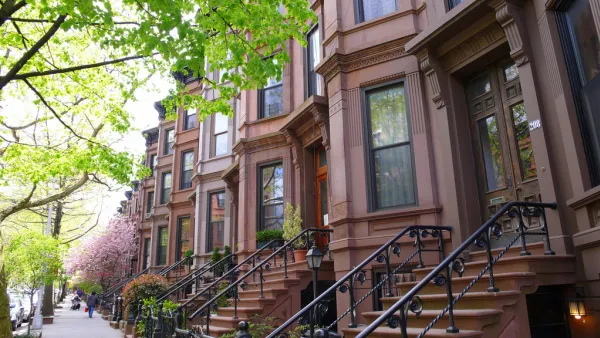Amidst a crisis of housing affordability around the country, one media organization is leveraging public records law to discover answers to questions, long obscured from the public, about who controls the real estate market.

Jade Hindmon and Marissa Cabrera report:
The debate over California's housing crisis tends to center on the lack of housing and how much more housing needs to be built to meet demand.
But there's another part of the conversation that often gets left out. It has to do with who owns the housing that already exists.
Another journalist, Aaron Glantz, is leveraging public records to fill gaps in public knowledge about the real estate market. Glantz and colleagues at Reveal have sued the Treasury Department to find out more about the "secret landlords" controlling the housing market.
An article by Glantz, written in December, provides more information about what we do know about how anonymous shell companies hide their wealth in real estate:
All-cash transactions have come to account for a quarter of all residential real estate purchases, “totaling hundreds of billions of dollars nationwide,” the Financial Crimes Enforcement Network – the financial crimes unit of the federal Treasury Department, also known as FinCEN – noted in a 2017 news release. Thanks to the Bank Secrecy Act, a 1970 anti-money-laundering law, the agency is able to learn who owns many of these properties. In high-cost cities such as New York, San Francisco, Los Angeles and Miami, it’s flagged over 30% of cash purchases as suspicious transactions. But FinCEN also cites this bill to hide this information from the public, leaving the American people increasingly in the dark about who owns their cities.
The article linked below includes an interview with Glantz for Midday Edition, a show airing on KPBS in San Diego.
FULL STORY: Public Radio Program Sues To Uncover Secret Landlords Buying Up America’s Cities

Analysis: Cybertruck Fatality Rate Far Exceeds That of Ford Pinto
The Tesla Cybertruck was recalled seven times last year.

National Parks Layoffs Will Cause Communities to Lose Billions
Thousands of essential park workers were laid off this week, just before the busy spring break season.

Retro-silient?: America’s First “Eco-burb,” The Woodlands Turns 50
A master-planned community north of Houston offers lessons on green infrastructure and resilient design, but falls short of its founder’s lofty affordability and walkability goals.

Test News Post 1
This is a summary

Analysis: Cybertruck Fatality Rate Far Exceeds That of Ford Pinto
The Tesla Cybertruck was recalled seven times last year.

Test News Headline 46
Test for the image on the front page.
Urban Design for Planners 1: Software Tools
This six-course series explores essential urban design concepts using open source software and equips planners with the tools they need to participate fully in the urban design process.
Planning for Universal Design
Learn the tools for implementing Universal Design in planning regulations.
EMC Planning Group, Inc.
Planetizen
Planetizen
Mpact (formerly Rail~Volution)
Great Falls Development Authority, Inc.
HUDs Office of Policy Development and Research
NYU Wagner Graduate School of Public Service


























